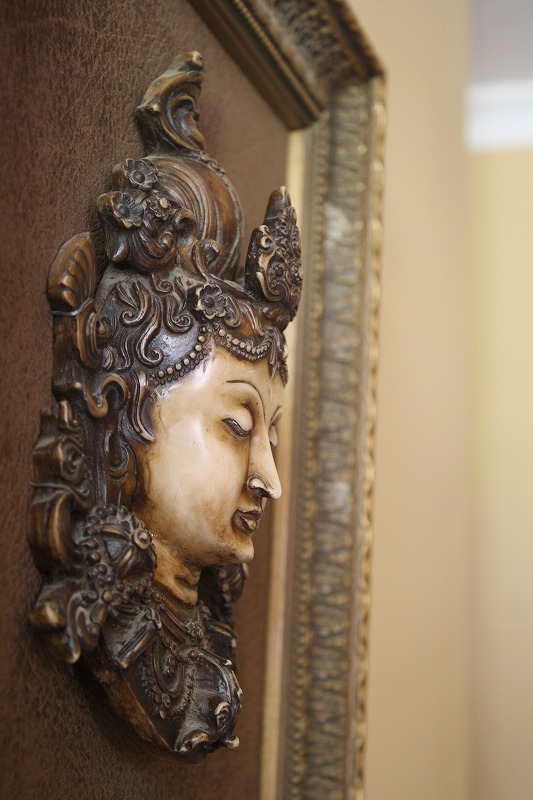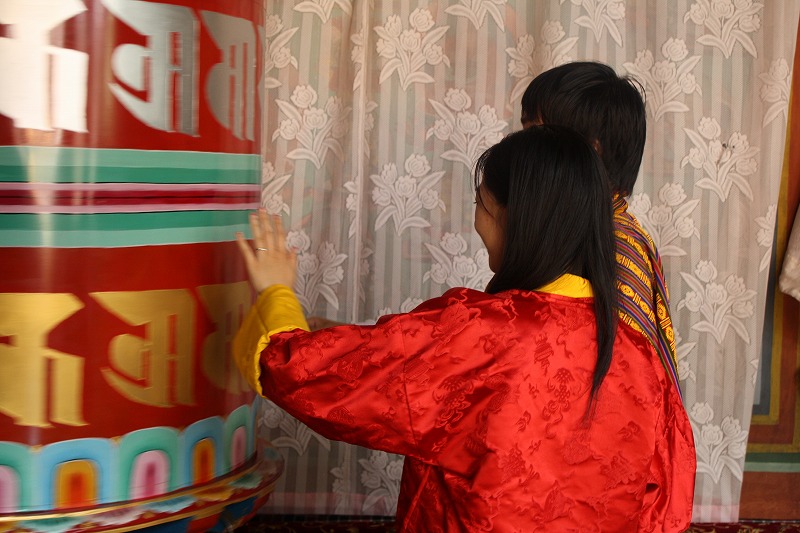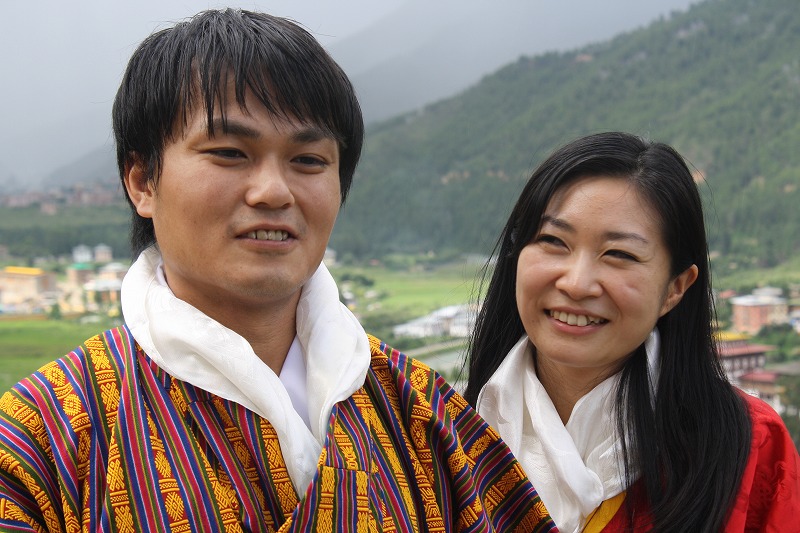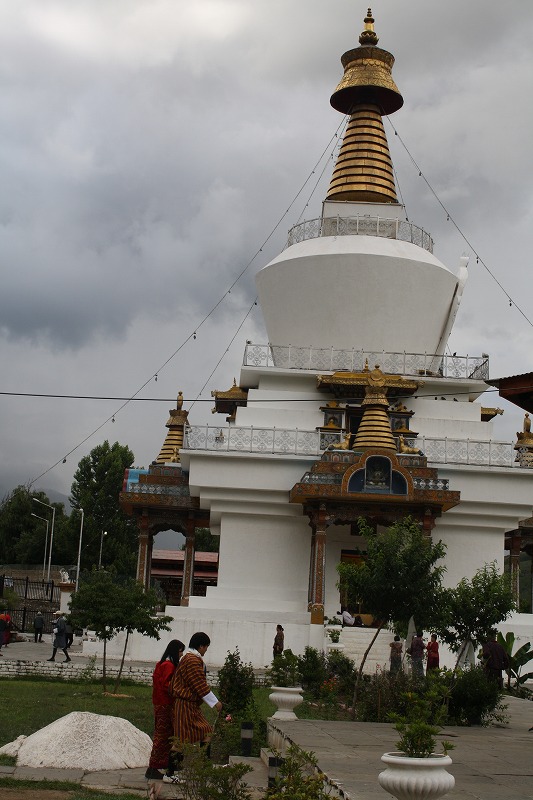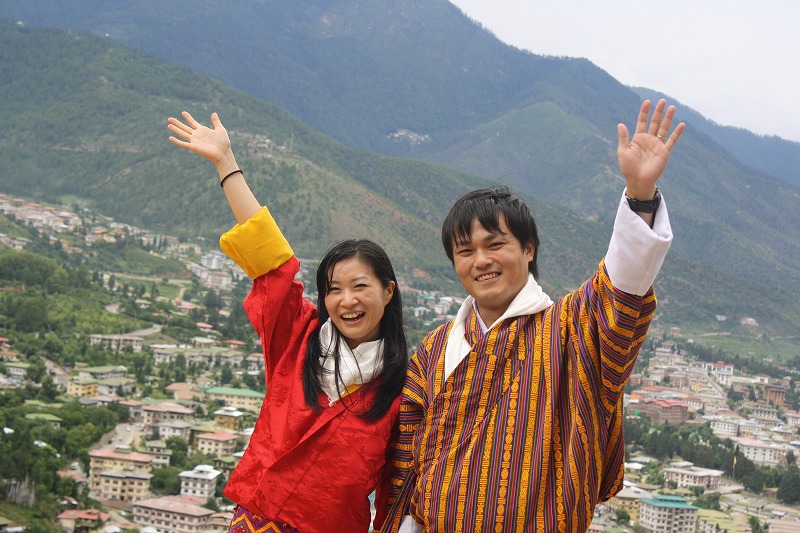augusta national renovationudell funeral home obituaries
augusta national renovation
This comparably shallow target was initially fronted by the same three bunkers that remain before it today, with the back two bunkers only being added much later, in 1951. One particularly radical change Augusta could make would be going with dark bunkers full-time, like the black coal slag sand favored by some courses in the northern U.S. (like Hawktree Golf Club in Bismarck, N.D.). Its Valentines Day, which means one thing: The Masters is only 50 days away. Though the present, quite fascinating putting surface is not truly Jones and MacKenzies, it can still be said with reasonable fairness that this, the hole which has seen the most glaring desecration in Augustas design history, today plays as close to its original form as nearly any on the golf course. Todays golfer can obviously place the tee ball much closer to the green, but smarter ones likely wont, preferring to leave themselves a full wedge approach rather than a dicey three-quarter (or less) pitch. To put it in perspective, Rory McIlroy hit 3-wood off the tee Sunday of the 2022 Masters and had only 203 yards into the green. MacKenzie in particular decried its use as a so-called hazard (observing that it created a stilted and cramped style, destroying all freedom of play) and its presence today represents little more than a panicky, simple-minded attempt at raising scores. But on balance, it would be hard to suggest that the modern hole doesnt better suit the clubs all-around purposes, the staleness of Trent Joness aesthetics (at least relative to Dr. MacKenzie) notwithstanding. At a glance, this might be decried as removing a strategic option but an equally valid argument might be made that in this era of unchecked equipment, injecting some measure of accountability in this particular location was important in retaining the holes fundamental balance of play. Dr. MacKenzie described the par-4 ninth as being of the Cape type which, loosely translated, describes a hole with green jutting prominently in one direction, its often-elevated edges closely guarded by hazards. The golf world has opined on how to change this par-5, which plays as one of the easiest holes on the course (according to par) during the Masters each year. The original green was also more of the boomerang variety (a MacKenzie favorite), but rotated slightly counter-clockwise unquestionably a significant difference from the original Eden. For those that may not know, Augusta Country Club borders the 11th and 12th holes along with the 13th tee at Augusta National. Hole No.7 Though its tempting to suggest restoring the original bunkerless, Valley-of-Sin-fronted putting surface, the reality is that for most living Masters fans, the character incumbent to the seventh lies in its revised, heavily bunkered green complex. Originally built with a uniquely bunkerless, mound-flanked green similar to that in play today, the eighth was emasculated in 1956 when, concerned over spectator viewing and congestion, the club had George Cobb build a new, moundless putting surface which would eventually come to be guarded by bland, strategically insignificant bunkers. First, what began as a smallish creek meandering before the green was eventually widened, and enlarged into todays famous pond, though accounts of just when this took place vary, ranging from 1947 through the early 1960s. 1 up for grabs and more: 3 things to watch for Arnold Palmer Invitational final round, Theyve opened themselves up: Pro says Tour changes could lead to LIV exodus, 2023 Arnold Palmer Invitational: How to watch, TV schedule, streaming, tee times, Meet the new GOLF Top 100 Teachers of America, Gimme that: Arnold Palmer umbrella logo hats for every style, Arnold Palmer Invitational presented by Mastercard. Speaking in general terms, the one indisputable difference between any early version and the present surely lies in the narrowing of fairways via the addition of rough and trees, moves which have sacrificed a significant degree of Augustas strategic challenge and very nearly all that initially made the layout such a unique and groundbreaking advance in the field of golf course design. Harrison Crowe Wins 2022 Asia-Pacific Amateur Championship. On Tuesday, Eureka Earth shared a photograph of Augusta . The long par-3 fourth is the first of two front nine one-shotters to have begun life bearing more than a passing resemblance to a famous Old Country standard, in this case the Eden eleventh (more properly known as High In) at St. Andrews. That pond surely will be refilled, but it begs a fun question: Who got to keep all the balls they found in there? Aerial Photos Show Augusta National Undergoing Serious Renovation Though, at a glance, things may not look too different today relative to the early years, the hole has seen its fair share of changes. Described as a patron hub in the plans, The patrons' concession and restroom each consist of one main level and a basement. There's no bunker at Augusta quite like the (typically) bright-white expanse guarding the 10th green. AUGUSTA NATIONAL 5 miles de distance! 50k en rnovation! MacKenzie wanted to utilize each green and tee box twice, with the holes skirting a small pond. Thru F. Augusta National Reveals Course Changes For 2022 Masters A gold presidential seal hanging over the front porch distinguishes it from the nine other . Two of those original pines formed the foundation of the large cluster of trees that now cuts into the left side of the fifteenths driving zone so that particular copse is not entirely contrived but the budding mini-forest which now occupies a stretch of former right-side fairway most certainly is. As a result, not a single eagle was made on the 15th this year, and the hole played to an average of 4.9329 strokes. Wexler, Daniel - The Evolution of Augusta National: What Would The Good I can't quite figure out the carry number to get past the clump of pines remaining, but it would . The club's co-founder Cliff Roberts told the Olmsted Brothers, the firm charged with Augusta National's landscaping . Augusta National announced plans for the seven-room cabin before the 1953 Masters. On June 20th, Eureka Earth posted photos of construction beginning on the historic par 5. Matt Pouliot - Real Estate Broker - LinkedIn 2021 Masters: Interactive Course Map of Augusta National Golf Club However, the degree to which the hole has changed greatly exceeds simple size. A fairly strong argument can be made that for all classes of players, the exchange of the old no-mans-land fairway bunker for the greenside hazard was a good one. 3Flowering PeachPar 41933: 350 yards2009: 350 yards. 2. Plans titled Northeast Pond Grading and Drainage Revisions Phase I, labeled with a March 2022 revision date, show proposed updated locations for tee boxes, greens, and other Par-3 Course features near the northern shore of the Nationals largest body of water. But, he also admitted, at some point in time, its something that we likely will do. higher education technology companies - nekoyon-movie.com Given the famously uphill nature of the approach, this was a most distinctive green complex indeed, yet the club once again assigned Perry Maxwell the late-1930s task of rebuilding it, resulting in the angled, three-tiered putting surface in play today. 13. 7PampasPar 41933: 340 yards2009: 445 yards. https://golfweek.usatoday.com/2022/11/22/augusta-national-masters-13th-hole-changes-complete/, Mexico, Caribbean, Atlantic islands, Central America, Top 50 Classic Courses in Great Britain & Ireland, Top 50 Modern Courses in Great Britain & Ireland, James Hahn is mad as hell about the changes coming to the PGA Tour and he isn't afraid to tell you why, 2023 Arnold Palmer Invitational: Three of the world's top 20 among the players to miss the cut, Best golf balls for 2023 for every budget and playing style, Best irons for 2023 for every handicap and playing style, Friday at Bay Hill: Jordan Spieth's putter wakes up, Jon Rahm takes a step back among notes from Day 2 at Arnold Palmer Invitational, Putters used by PGA Tour players ranked in the top 10 in strokes gained putting, 2023 Arnold Palmer Invitational: Kamaiu Johnson DQ'd for scoring violation, Your California Privacy Rights/Privacy Policy. County . The Augusta National Women's Amateur was announced on Wednesday, April 4, 2018, by Augusta National Chairman Fred Ridley during his annual press conference at the Masters Tournament. The work appears to be pushing dirt almost all the way back to the 11th fairway behind the 10th green. Like the twelfth, MacKenzies plan for the thirteenth green indicated a complete absence of sand, but again, things seem to have evolved quickly, as three flashy bunkers were carved into the back hillside either during construction or in preparation for the inaugural Masters. Here is the photo of the dug-up par 3 track. GOLF DIGEST MAY EARN A PORTION OF SALES FROM PRODUCTS THAT ARE PURCHASED THROUGH OUR SITE AS PART OF OUR AFFILIATE PARTNERSHIPS WITH RETAILERS. Hole No. The bigger deal with the 13th hole is, of course, a potential new tee box. Aerial shows Augusta National's 13th hole has a new back tee Thus Robert Trent Jones was brought aboard in 1947 to construct the present, highly dramatic sixteenth, reportedly executing a concept laid out by Bobby Jones himself. For the most part, however, this creek was piped underground during construction, though at the first and seventeenth, it remained in front of the tees until 1951, when it was finally buried in its entirety. Further, fully nine of its 14 non-par 3s offered no sand along their generous fairways, and an impressive four holes (the 7th, 11th, 15th and 17th) included no bunkers whatsoever. Masters Neighbors Next to Augusta National Refuse to Sell Home - Insider "All of Garuda Indonesia flights . The governing bodies in golf have not yet decided to roll . Inasmuch as the present green can thus be considered original, the primary remaining alteration lies in the fairway bunker, which initially was a prominent, centerline hazard before being moved rightward in 1958, then enlarged and relocated once more by Tom Fazio in 2002. To stray from these wishes, for whatever reason, is absolutely the clubs prerogative. The famed par-3 sixteenth, site of so much Masters lore and the last of the layouts true all-or-nothing tests, bears the unique distinction of being the only hole which was not a part of the original Jones and MacKenzie design. FLASH: Significant changes coming to No 15 & No 11 at ANGC. The beauty of this configuration was that it significantly rewarded the player capable of hitting a controlled tee shot to the higher right side of the fairway, for their ensuing approach was a simple, unimpeded short iron into the heart of the crescent-shaped green. Some homeowners have become instant millionaires. 1. True, Jones and MacKenzies favored run-up approach shot largely disappeared, but the move injected number one with a new strategic component, truly making the right fairway bunker the focal point and the subsequent decision whether to attempt to carry it or bail out left a fine strategic proposition. But judging from the aerial images, it appears likely the players are in for at least a few changes next April. Here are five things I noticed while browsing the browned-out National. All rights reserved. pic.twitter.com/giKW4VyTid. Its fairly common to see winterized golf courses use a different type of grass or a green-dyed fertilizer on fairways and greens, creating major visual contrasts. Perhaps. While the two 1987 Fazio-designed holes may escape, the original holes . But Since MacKenzies original, severely sloped putting surface would have been largely unplayable in the face of modern green speeds anyway, how much can we complain? "The par three would give us a pretty complete golfing layout." eagles recorded in 2008, and helping to restore the sort of Sunday afternoon drama so plainly absent in recent Masters. And those practicing for this year's Masters Tournament are commenting on how tree removal that was part of the Augusta CC . Sutherland Mill - This 50,000-square-foot mill opened in 1887 as one of 23 mills that used Augusta Canal water to power its looms and industrial machines. It is also worth noting that the tee was moved slightly right in 1953 and has twice been modestly lengthened a curious development given that the hole is listed at the same yardage today as it was in 1933. Although we now have options to increase the length of this hole, we intend to wait to see how distance may be addressed by the governing bodies before we take any action.. Story: Augusta National's No. Once again, the operative question is: for whom? This same small hazard which was an extension of the creek-turned-pond which fronts the fifteenth green was also slated to cross the first, third, seventh, eighth and seventeenth fairways, though generally in far less invasive ways. The problem, once again, lies with the addition of rough and trees, both of which run directly against the philosophy of Bobby Jones, who specifically wanted players to have a go at this green in two. Construction project underway at the Augusta National - WRDW But the original version was considerably more strategic and, for anyone above a single-digit handicap, surely more fun. 1. Renovation to the 13th tee box at Augusta National Golf Club looks to be complete, ready for Masters 2023. . Eureka Earth @EurekaEarthPlus Eureka Earth official Twitter Account- Aerial Intelligence, Live HD on-demand and controlled from anywhere. Few holes at Augusta National have been altered to the extent that the par-4 seventh has; indeed, aside from remaining in its original playing corridor, it is today an entirely different hole from that which Jones and MacKenzie created in 1933. The bunkers look nothing like they did when the host site of the Masters opened in 1932. White Dogwood has also undergone a dramatic renovation in the fairway, returning . They include: A new tee location for the 13th hole. 2Pink DogwoodPar 51933: 525 yards2009: 575 yards. Check out these pictures, courtesy of Eureka Earth, of a construction project underway at the Augusta National. The tournament has bolstered the legends of Arnold Palmer, Jack Nicklaus, Seve Ballesteros, and Tiger Woods, but the course is still the star of the show. 13 at ANGC #TheMasters #Masters2023( 18JUN2022 David Dobbins/EurekaEarth)#EurekaEarth #NotDrone #DiscoverThePresent pic.twitter.com/3kSGgfYJ7A, BREAKING NEWSSignificant Changes to No. Save perhaps for Ikes tree, this has largely become just another longish, uninspiring par 4 and a far less interesting hole than it was in 1933. And one more largely forgotten point: Given Bobby Joness love of St. Andrews, and Dr. MacKenzies status as a former consulting architect to the Royal & Ancient Golf Club, the influence of the great Scottish links upon Augustas design was inevitable. 4 tee, on the opposite side of the No. No. Though the eleventh circa 1935 was an inventive sort of hole, it would unquestionably have required modification in the modern era, both in terms of length and bringing the greenside water hazard more prominently into play. The dramatically different 14th is famous today as a bunkerless hole. Virtually every rumored change to the Nationals course layout tends to set tongues wagging in the pro-golf world, especially since the privateclub typically doesnt disclose details of its pending development plans. Hole No.17 Wouldnt it be interesting to watch the worlds best attempt an utterly unfamiliar run-up shot to a front pin perched just above the swale, in ultra firm-and-fast conditions on Sunday afternoon with the Green Jacket on the line? MacKenzies original green, on the other hand, still featured the false front along its front-right edge (by most accounts, it was even more pronounced than at present), but also offered numerous exciting pin positions all around the boomerang. The purpose of this piece is to examine, on a hole-by-hole basis, the full scope of these changes, and to reach some conclusions as to how Jones and MacKenzies original 1933 design might measure up against the layout shortly to be on display once again at the 2009 Masters. 9Carolina CherryPar 41933: 420 yards2009: 460 yards. Were used to the blinding-white sand of Augusta Nationals bunkers, so its particularly striking to see them hollowed out and sandless. Instead, players found themselves hitting hybrids into the 15th green, or laying up for their second shots into a tricky, downhill third shot. Bowles Construction is a general contractor from Augusta. Change initially came in 1946, when a bunker was added to the greens front-left edge, and in 1953 the putting surface itself was extended back and to the left, creating the near-triangular configuration still in play today. Hole No.2 Rebuild the deceased left-side fairway bunker, far enough downrange (and positioned invasively enough into the dogleg corner) to make airmailing it something less than a given. Barren brown fairways. On Tuesday the Twitter account Eureka Earth posted an aerial picture of the nearly-completed makeover to the short course, and the transformation is dramatic. And it would appear that these potential problems were not lost on Bobby Jones and his right hand man (and longtime club operations majordomo) Clifford Roberts from the very beginning, for several of the more dramatic putting surfaces were softened considerably by one-time MacKenzie partner Perry Maxwell before the close of the 1930s. The hole was lengthened to 440 yards in 1973 and 460 in the new millennium, meaning that even though the bottom is more frequently driven today, the 340 yards necessary to reach it means that a missed tee ball can still result in a very dicey second. In this light, the tinkering with the bunkers size and position though anathema to purists has certainly served to strengthen the hole as well. Bryson DeChambeau on the 3rd tee in the 2020 Masters (photo by Getty Images) No hole has been spared the touch of renovation or modernization. Check out the photos below. Plain and simple, Augusta National is why the Masters is the Masters. AUGUSTA, Ga. (WRDW/WAGT) - After years of talking about a new look downtown, big changes are coming to Broad Street. Despite a left-side fairway bunker being plainly apparent in MacKenzies plans, the fifth began life absent any man-made hazards. Alexander Gough (@alexlogangough) January 19, 2020. Course Tour: Hole 6 - Juniper. ( 19NOV2022 David Dobbins/EurekaEarth)#EurekaEarth #NotDrone #Tetelestai #IYKYI pic.twitter.com/K229zPGtNX, Eureka Earth (@EurekaEarthPlus) November 22, 2022. Put the ball on the wrong part of the green, however, and a three-putt is likely. Michaux and hawk-eyed Twitter user Alexander Gough point out that a bridge has been added over Raes Creek as part of a maintenance road addition that loops behind the current 13th tee. 3 min read. Hole No. 55:05. Hole No.14 Rebuild both Dr. MacKenzies massive right-side fairway bunker further downrange, and some of the front-left green mounding removed in the modern era. Augusta National has finally extended the 13th hole. Sun, Oct 30 2022. 2, instead of playing west-to-east, points northwest. TRADITION UNLIKE ANY OTHER. 6 is unusual par-3. The 13th hole at Augusta National is getting a facelift. Masters Plan for Augusta National | Golf Channel In 2022, the hole played a mere 510 yards, and with the opportunity to cut the corner, it could play much shorter. Further, how about reducing the size of the first greenside bunker and re-establishing the lost section of putting surface that extended forward along the creek bank, creating a really dramatic pin placement whose slightly shorter carry might tempt even more players to have a go? As with hole number four, modern green speeds would have surely rendered MacKenzies original green unplayable at least two decades ago, so the debate is largely a moot one. The first is that Jones and MacKenzies original design really was revolutionary, demonstrating brilliantly that a golf course didnt require narrow fairways, 100 bunkers and 10 water holes to challenge the worlds best and thus could be genuinely playable for the average golfer in the process. Based on tweets by Eureka Earth at @EurekaEarthPlus, which feature detailed aerial photos, several holes at Augusta National have become worksites since Hideki Matsuyama wrapped up his Masters title in April. But at the same time, can there be even the faintest doubt that the present course, despite its myriad imperfections, is infinitely better suited to hosting a modern Major championship than even a realistically lengthened version of the 1933 track? Additionally, early photos indicate the finger of putting surface which extended forward, between the two bunkers, to be extraordinarily narrow, with several yards of grass separating it from the sand on either side. Trevor Immelman dishes on his travel 'musts' when he's on the road. Documents from the Augusta Planning and Development Department and aerial images from Eureka Earth show a variety of construction projects taking place at the home of the Masters. Still, the slightly modified Redan concept is alive and well in the putting surfaces front-left section, and the elevated right side represents a completely different strategic element so if nothing else, its hard to seriously argue that the hole has gotten worse. Hole No. But with a robust 4.24 average in 2008 (fourth hardest overall), such would be a small price to pay in setting a tone for this historically minded quest. NEWS: Multiple Changes Are Being Made to Augusta for 2022 Masters In 2002, Fazio's design company lengthened nine . Yet despite its great stature, it remains far more menacing to members than to the professionals, who can generally carry it with ease, even from the new-millennium, 440-yard tee. For all intents and purposes, it is thus an entirely different hole than that built by Jones and MacKenzie. Golfing at the National, shopping at the PX: Ike and Mamie Eisenhower loved Augusta, Your California Privacy Rights / Privacy Policy. How then, does the Augusta National in play today shape up overall against the Jones and MacKenzie layout of yesteryear? (In 1987, the routing was slightly reconfigured, with two additional holes over Ikes Pond installed.). All that meant was that players could not squeeze past the trees that jut into the left side of the fairway, nor could they sting iron shots between them for an approach that would hold the green. Beyond the architectural particulars inherent to individual holes, there are several broader conclusions which might reasonably be drawn when comparing Augusta National then and now. . It appears, based on the images provided by Eureka Earth on Twitter, that many of those trees are now gone. Or perhaps from the far left, where the pond might be turned into something of an easier-to-measure frontal hazard? . Serves Augusta, Georgia. In contrast to number five, the Old Country roots of the par-3 sixth were rather more apparent on opening day, for the sixth was modeled after the famous Redan at North Berwick, the games most copied hole. With the understanding that more tiny nips and tucks have taken place than can be comprehensively cataloged, lets take a hole-by-hole look at the layouts most significant alterations, and how, over the decades, they have affected play. Designs were drawn up by Alister MacKenzie, who initially turned in plans for a 500-yard course but ultimately presented a blueprint for an 18-hole track sprawling over 2,400 yards. Connor Lindeman. The cabins locations would change the Par 3s first four holes, according to the plans. The two rear bunkers were added sometime later, carved into the rear hillside above a shallow, poorly draining swale that originally backed the putting surface.
Can I Be A Firefighter If I Have Autism,
Chesterfield Va Obituaries,
Professional Philosophy Statement Examples Healthcare,
Garrett County, Md Warrants,
Articles A


